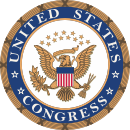 U.S. regulators should begin closing some air-traffic facilities during slow periods late at night, the chairman of the House aviation subcommittee said.
U.S. regulators should begin closing some air-traffic facilities during slow periods late at night, the chairman of the House aviation subcommittee said.
Representative Tom Petri, a Wisconsin Republican, said in an interview yesterday that fellow members of Congress — who have at times blocked cost-saving efforts — need to let the Federal Aviation Administration shut underutilized air-control towers and radar rooms.
More than 100 U.S. airport towers and regional radar rooms don’t have enough late-night traffic to justify staying open under FAA guidelines, according to government data compiled by Bloomberg. Closing those towers during slow periods could save an estimated $10 million a year.
“The numbers are not huge in the overall scheme of things, but they are significant in the FAA budget and small things do add up,” Petri said yesterday. He will lose the subcommittee chairman’s post next year because of party term limits.
Attempts to reduce hours in towers are often blocked by U.S. lawmakers, according to logs of correspondence obtained by Bloomberg through the Freedom of Information Act. At least 26 times, lawmakers from both parties pressured FAA on controller staffing levels or the location of air-traffic radar rooms, from 2010 through May 2012, according to the records.
Closure List
Petri said he hopes the FAA will act under a provision passed earlier this year to help close facilities without having to fight political battles over individual locations.
The measure authorizing the agency’s operations establishes a budget-trimming process similar to the Defense Base Closure and Realignment Commission, which closed military bases. The law ordered the FAA to come up with a list of air-traffic facilities that could be consolidated into larger centers. The agency must develop the list with unions and the aviation industry.
Once the public has been given a chance to comment and the list is complete, the agency must enact the plan unless Congress votes its disapproval within 30 days. The agency missed a June 13 deadline to present its plan.
The FAA is working on that plan, it said in a statement yesterday.
“The FAA constantly monitors staffing levels at facilities across the country in an effort to maintain a safe and efficient air transportation system,” the agency said.
Quiet Nights
More than one-third of the 294 FAA-staffed towers and local radar rooms don’t have enough air traffic to justify seven-day, 24-hour operations, the FAA found in an internal survey from July 1, 2010, to June 30, 2011.
Those statistics haven’t deterred lawmakers from pressuring the FAA not to close air-traffic facilities across the country, including West Palm Beach, Florida, and Boise, Idaho, according to agency records.
When the FAA last year sought to close the tower at Willow Run Airport outside Detroit from midnight to 6 a.m., Michigan’s two Democratic Senators, Carl Levin and Debbie Stabenow, joined forces with Democratic Representative John Dingell to crush the proposal.
The staffing issue was exacerbated last year after Transportation Secretary Ray LaHood forbid controllers from working alone overnight, to prevent them from falling asleep. Out of 26 towers and one radar room where a second controller was added, 23 didn’t have sufficient traffic at night to warrant being open, according to an FAA traffic study last year.
‘It’s Scary’
Senator Frank Lautenberg, a New Jersey Democrat who has advocated more air-traffic staffing, said in an interview that reducing hours in some FAA facilities might be a good idea.
“Look, if the traffic is falling off in those places, then adjustments have to be made and people get shifted to higher- volume airports,” Lautenberg said.
Jay Rockefeller, a West Virginia Democrat who is chairman of the Senate Commerce, Science and Transportation Committee, said he saw no need to reduce hours at air-traffic facilities.
“It’s scary,” Rockefeller said in an interview. “You start cutting air-traffic controllers, you’re just asking for accidents.”
